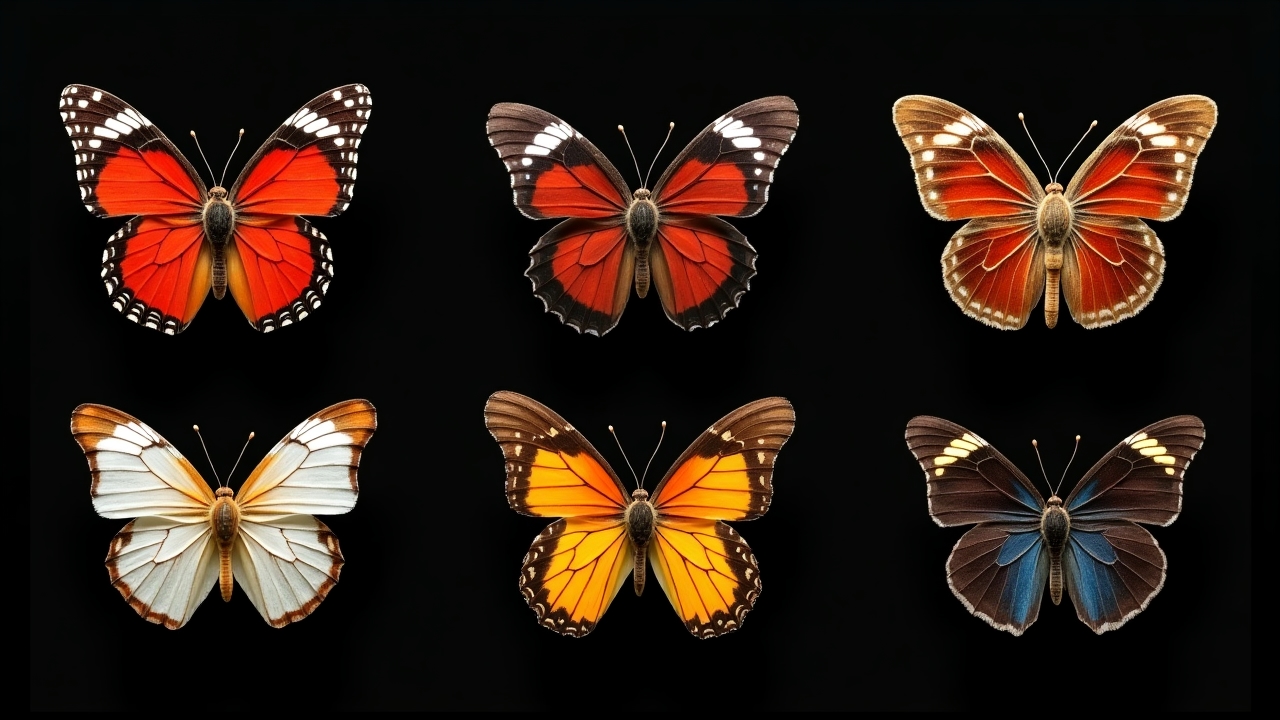The world of tropical butterflies is filled with spectacular colors and patterns that have evolved over millions of years. Whether you're a dedicated butterfly enthusiast or simply appreciate natural beauty, these five species represent some of the most visually stunning butterflies on our planet. Each has unique characteristics that make it particularly noteworthy among the thousands of butterfly species that exist worldwide.
1. Blue Morpho (Morpho peleides)
Perhaps the most iconic of all tropical butterflies, the Blue Morpho is renowned for its dazzling blue iridescence. Native to the rainforests of Central and South America, this large butterfly can have a wingspan of up to 8 inches. What makes the Blue Morpho truly remarkable is that its brilliant blue color isn't created by pigmentation but by the microscopic structure of its wing scales, which reflect light in a phenomenon known as structural coloration.
When in flight, the flashing blue of its wings creates an almost hypnotic effect, alternating with the dark brown of its underwings. This has made the Blue Morpho not only a favorite among collectors but also a symbol of rainforest conservation. The species faces threats from deforestation and habitat fragmentation throughout its range.
2. Madagascar Sunset Moth (Chrysiridia rhipheus)
Often mistaken for a butterfly due to its day-flying habits and brilliant coloration, the Madagascar Sunset Moth is actually a member of the Uraniidae moth family. Endemic to Madagascar, this species displays an extraordinary rainbow of metallic colors: emerald green, blue, purple, and red all shimmer across its wings.
Like the Blue Morpho, the Sunset Moth's colors come from structural coloration rather than pigments. What makes this species particularly special is how the colors shift and change depending on the viewing angle, creating a dynamic display that seems almost impossible in nature. The Madagascar Sunset Moth has become increasingly rare due to habitat loss in its island home.
3. Glasswing Butterfly (Greta oto)
Unlike most butterflies that rely on vibrant colors for their beauty, the Glasswing Butterfly takes a completely different approach. Native to Central America, this remarkable species has transparent wings that look like panels of clear glass. The transparent areas lack the colored scales that cover most butterfly wings, leaving only a delicate membrane reinforced by visible veins.
This transparency serves as an effective form of camouflage, making the butterfly difficult to spot as it flies through the rainforest. Only the borders of its wings contain the typical brown-black pigmentation. The Glasswing represents one of nature's most elegant solutions to avoiding predation and demonstrates that sometimes the absence of color can be just as striking as its presence.
4. Golden Birdwing (Troides rhadamantus)
The Golden Birdwing is a member of the swallowtail family and one of the largest butterflies in the world. Found in the Philippines, this magnificent species features velvety black forewings contrasted with brilliant golden-yellow hindwings in males (females have more subdued coloration with white spots).
Unlike many colorful butterflies, the Birdwing's colors come from pigmentation rather than structural coloration. The bright yellow serves as a warning to potential predators that the butterfly is toxic—it contains cyanogenic glycosides absorbed from its host plants during the caterpillar stage. This species is protected under CITES (Convention on International Trade in Endangered Species) due to its popularity with collectors and ongoing habitat loss.
5. Emerald Swallowtail (Papilio palinurus)
The Emerald Swallowtail, native to Southeast Asia, features one of the most striking green colorations found in the butterfly world. Its wings appear to be covered in a mosaic of emerald tiles that shift between green and blue depending on the viewing angle. Closer examination reveals that each "tile" is actually a concave depression lined with yellow and blue scales that, when viewed together, create the illusion of green.
This complex color mixing is one of the most sophisticated examples of structural coloration in nature. The butterfly's hindwings feature the characteristic "tails" of the swallowtail family, along with red and blue eyespots that help deflect predator attacks away from vital body parts.
Conservation Considerations
All five of these spectacular butterfly species face threats from habitat destruction, climate change, and in some cases, collection for the international butterfly trade. Supporting conservation initiatives in tropical regions and visiting sustainable butterfly exhibits that participate in breeding programs are ways to help ensure these living jewels continue to grace our planet for generations to come.
Whether observed in their natural habitats or in conservation-focused butterfly gardens, these five species represent some of the most breathtaking examples of nature's artistry and evolutionary innovation.
